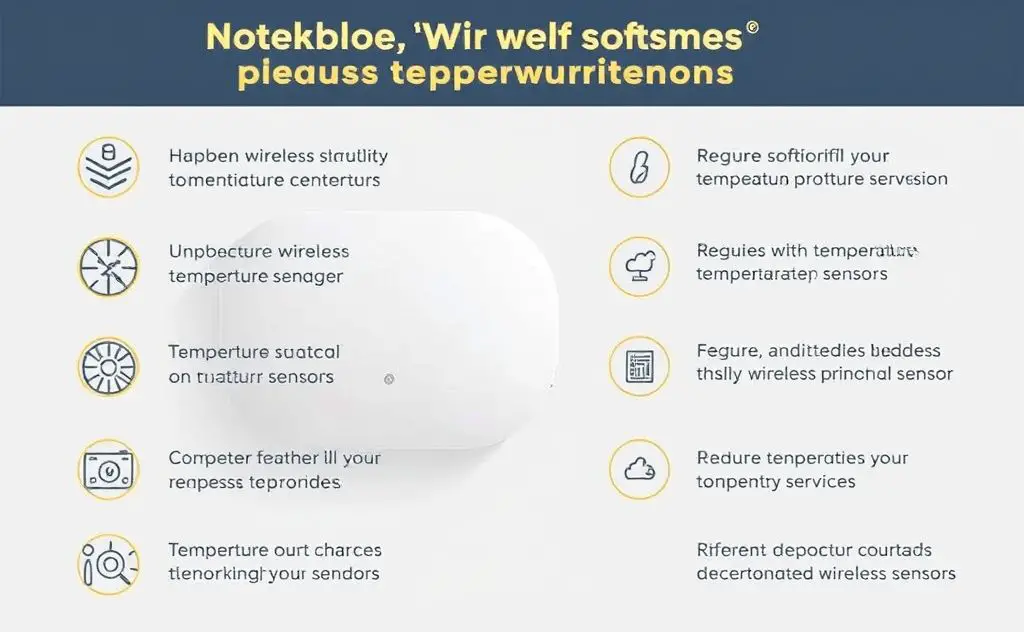Wireless temperature sensors offer real-time monitoring, increased flexibility, reduced installation costs, and enhanced data accuracy for various applications.
Wireless temperature sensors revolutionize how we monitor environments – from commercial kitchens to medical labs. These smart devices eliminate manual checks while providing real-time data to prevent costly failures.

Why Wireless Temperature Monitoring Matters
Precise temperature control impacts safety, compliance, and operational efficiency across industries. Traditional manual methods can’t match the accuracy or responsiveness of modern wireless solutions.
Critical Temperature Ranges by Industry
| Industry | Temperature Range |
|---|---|
| Pharmaceuticals | 59°-77°F (medication storage) |
| Food Service | 32°-40°F (refrigerated), 0°F (frozen) |
| Data Centers | 64.4°-80.6°F (server rooms) |

Top 7 Benefits of Wireless Temperature Sensors
1. 24/7 Remote Monitoring
Access real-time data from anywhere via smartphone or computer. The best app-controlled heaters pair perfectly with these systems for complete climate management.
2. Instant Alert Systems
Receive SMS/email notifications when temperatures deviate from set parameters. This prevents spoilage of sensitive items like vaccines or restaurant inventory.
3. Customizable Thresholds
Set different parameters for various zones. A precise thermostat control complements this feature for complete environmental management.
4. Historical Data Tracking
Generate compliance reports and analyze trends over time. This helps identify equipment issues before failures occur.
5. Easy Installation
No wiring needed – place sensors anywhere within range. Unlike hardwired systems, these can be relocated as needs change.
6. Cost Savings
Prevent expensive losses from spoiled inventory or equipment damage. The system pays for itself by avoiding just one major incident.
7. Scalability
Start with one sensor and expand as needed. This makes wireless systems ideal for growing businesses.
Industry-Specific Applications
Food Service
Restaurants use sensors in walk-ins, freezers, and prep areas. The USDA requires precise monitoring to prevent foodborne illness.
Healthcare
Hospitals protect medications and lab samples with continuous monitoring. Blood banks maintain strict 35°-50°F ranges.
Manufacturing
Industrial processes often require specific temperature conditions. Sensors help maintain quality control throughout production.
Choosing the Right System
Consider these factors when selecting wireless temperature sensors:
- Measurement range (-40°F to 250°F typical)
- Battery life (1-5 years common)
- Connectivity range (Bluetooth, WiFi, or cellular)
- Data logging capabilities
- Alert customization options
For outdoor applications, look for weatherproof models that can withstand extreme conditions. Indoor systems should integrate easily with existing smart home or building automation systems.
Future of Temperature Monitoring
The wireless sensor market is projected to grow from $2.19 billion in 2021 to $4.71 billion by 2028. Advancements in IoT and AI will drive smarter, more predictive systems that anticipate temperature fluctuations before they occur.

